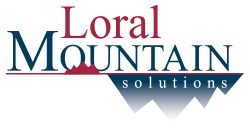Nuggets from “The Secret: What Great Leaders Know and Do”
If you are looking for a great place to start or rekindle your “leadership reading journey” – one of my all time favorite books is called The Secret: What Great Leaders Know and Do by Ken Blanchard and Mark Miller – two world class leaders and trainers.
It is a thin book with big print, a fable about about a young woman named Debbie who just completed one year in her new role as a supervisor in a fictitious company. She thought she had all the skills and talents to be successful upon being selected for the position, but after a year on the job she has learned that she does not. And over the course of the book, you learn about the mentoring program she enrolls in and how she learns the “Secret.”
One of the best ways to learn is through stories. This story about Debbie, while a fable, is rich in its lessons that are universally applicable to people of all ages, at all levels of responsibility – from parents, to new employees, to middle managers and senior executives. I have read it many times over the years and I learn something new every time.
The “Iceberg” Analogy for Leadership
One important lesson that stands out from the opening chapters in this book is the metaphor of the iceberg for defining leadership. What is above the water line is what you can see in people – the “doing” part of leadership, the skills demonstrated by actions. What is below the water line – and is so much bigger – is the “being” part of a person – the values, the character, what you cannot easily see in people. Clearly you must have both to be an effective leader of character – but it is the trusted relationships between people that ultimately enable leaders to be successful in securing followers. These trusted relationships find their foundation in what is in the heart, those deep beliefs that are “below the water line.” I enjoy this iceberg analogy so much that the graphic of my company logo incorporates this image, along with the name “mountain” – derived from the German word of “berg.”
The “SERVE” Model for Leading
A second valuable lesson I learned from this book is the importance of developing a model for leading that can be used to implement and guide your life. Debbie is exposed to the model SERVE, with each letter standing for a key element of the model. For instance, the “S” stands for “See the future.” It highlights the need for Debbie to understand where her organization is going, developing measurable goals to be achieved over time, and the importance of inspiring her team to help determine this roadmap together. I have used this model for years in my leadership workshops citing examples from my life along with those from students, who have, unknowingly in many cases, began following this model.
In the book, you witness Debbie learning about character and skills, and well as how to apply each element of her newly found model into her work environment. She learns the secret to what great leaders know and do – and you see it in action. It is one of the very best books on servant leadership that I have read.
This book helped me. It will help you!
